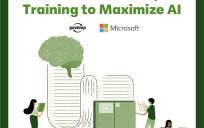 Data is a powerful tool for informing and inspiring action. Agencies are likely sitting on a “goldmine” of data and not realize it. They may also be working hard to leverage data. But it may have little strategic benefit to the agency or public.
Data is a powerful tool for informing and inspiring action. Agencies are likely sitting on a “goldmine” of data and not realize it. They may also be working hard to leverage data. But it may have little strategic benefit to the agency or public.
Many government agencies are required to collect data associated with essential functions. But data used only for compliance and internal purposes is likely to be suboptimal. Other agencies collect and analyze vast amounts of data. However, they are less than strategic about how they use it.
The Texas Higher Education Coordinating Board (THECB) has experience with both data missteps. Decades ago, the agency began collecting student-level data for allocating state funding to institutions of higher education. For years, little more was done with it.
Then, in 1987, the agency realized its data was a valuable resource to inform key policy questions and solutions. Early efforts were a big success. However, once the data’s value was established, the agency kicked into a “more is better” mode.
The number of data reports developed and eventually posted online increased exponentially over several years. It was too much of a good thing. And, too little time was spent honing what was most important. In addition, little effort was spent on effective dissemination. Thus, a great deal was produced but little was used.
In short, the Coordinating Board learned a lot about how to effectively use data for policy and practice, moving through the phases below. To ensure accurate and reliable data, these phases are relevant to many government entities:
- Initial collection and maintenance of data. (This may be due to an executive order or legislative requirement.)
- Synthesis and broader usage and sharing of data. (Recognizing the value of data to analyze issues and solve problems. At first, it may have a single purpose, but that may evolve over time.)
- Overzealous (or unfocused) data analysis and data posting. (This can result in an avalanche of data that may muddle the message or limit effective dissemination.)
- Data sweet spot. (This is when data truly informs and inspires action vis a vis agency priorities. It supports the mission and strategic plan of the organization.
Getting to the “sweet spot” in using data requires relationship management and strategic planning. It requires curating the data in transparent but focused ways that clearly message organizational priorities, needed actions, and desired outcomes.
Texas higher education data: striving for the sweet spot
Over time the THECB has fostered stronger relationships with colleges and universities in relation to the data that institutions collect and share. It has also strengthened its relationship with the legislature to advance the value of higher education data in the formulation of effective legislative proposals and funding priorities. In addition, the agency has reached out to other state agencies and national organizations to strategically work together on data needs from K-12 education, higher education, and the workforce.
The use of Texas higher education data is evolving. The THECB continuously realizes wide-ranging opportunities to leverage its data but has learned that data is most effectively used when it is focused and targeted to support agency and state priorities. Examples include:
- 60x30TX provides a snapshot of the state’s strategic plan for higher education
- Accountability system informs policy and practice. It also provides year-to-year and cross institution comparisons to support continuous improvement in priority area
- Providing a few primary sources for key higher education statistics such as the
o Texas higher education almanac which profiles performance and characteristics of public colleges and universities - College major and career and wage data
- High school to college data
To improve the quality of data dissemination and help stakeholders better understand how to utilize its data tools, the THECB introduced its data fellows program in 2017. The program trains stakeholders to understand and leverage data resources to support the state’s higher education strategic plan.
The THECB data tools enable legislators, taxpayers, parents and students to wade or dive into higher education data. As Texas Commissioner of Higher Education Raymund Paredes often says, the THECB data websites and almanac provide transparency. The accountability system is long recognized as a best-practice national model for higher education performance data.
Conclusion
In this age of big data, we can all learn from each other’s experiences.
After much trial and error, and ongoing focus on continuous improvement, the THECB has learned better approaches to using data. Strategic use of data informs and inspires action in higher education policy and programs. For Texas higher education this can ultimately lead to increased student access and success.
How does your organization use its data? Are you sitting on a goldmine that is not being used? Are you in data-overload mode? Or are you optimizing the value of your data to achieve agency goals and priorities?
Kelly Carper Polden is a GovLoop Featured Contributor. She is the assistant director of external relations, responsible for state agency communications and media relations, for the Texas Higher Education Coordinating Board. She has more than 25 years of experience as an award-winning, strategic communication professional with extensive experience in media and public relations, C-suite communications, global events management, brand/corporate image management, and strategic and crisis communication management. You can read her posts here.





Thank you for explaining how to use data effectively with the example of the Texas Higher Education Coordinating Board. There’s so much value in learning from the THECB’s experiences when developing a better approach to manage data and optimize its value.